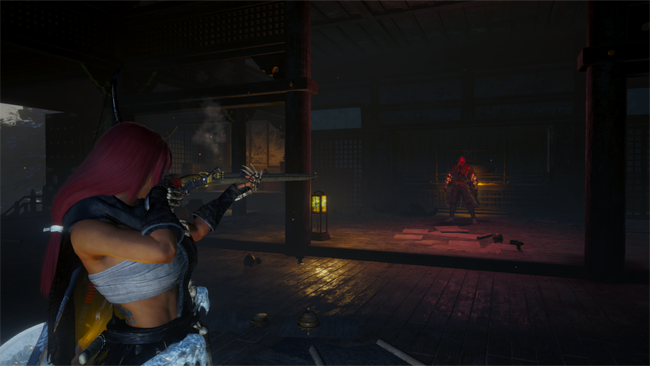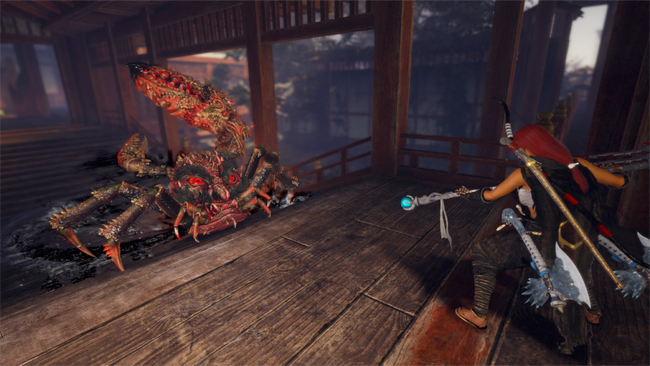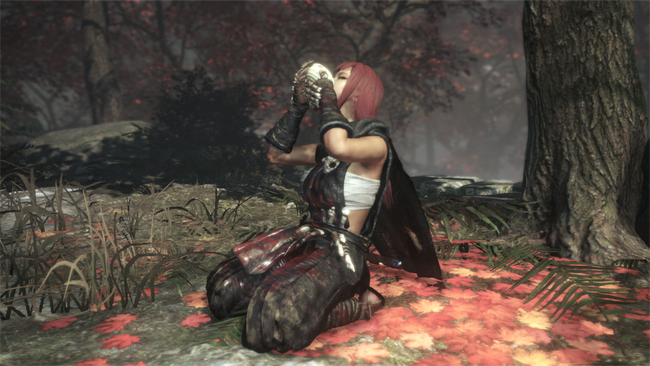
Nioh 2 The Tengu's Disciple Review
It can be a little hard to believe that Nioh 2 came out almost five months ago, but that’s just a consequence of 2020 being this mess of a year. Still, here we are in August, with Nioh 2 receiving its first piece of paid DLC content, titled The Tengu’s Disciple. As the first part of a trilogy and the first DLC of the Season Pass, it also comes with a sizeable update that makes some balance changes and brings even more extra content. If you’ve been itching to go back to Nioh 2, which was already an excellent game when it came out, this is the perfect time.
The Tengu’s Disciple, however, feels a little strange from the get-go. The original Nioh also had its own trilogy of DLC, telling a story that took place after the end of the game. Nioh 2 follows the same route and starts a new narrative with this first piece of content. Even so, you’d be forgiven for not realizing that The Tengu’s Disciple takes place after the story of Nioh 2, considering that the set up has the vibe of a side story: our main character finds a strange flute during a yokai hunting mission, and upon examining it they’re transported back in time to the 1100 century.

This adventure in the past exists essentially so that our character can meet Minamoto no Yoshitsune, one of the most famous samurai in the history of Japan. In Nioh 2, Yoshitsune is a half-yokai and half-human Shiftling, just like our protagonist, and he’s also the wielder of the sword that in the future becomes your yokai-banishing dagger. Immediately realizing that our protagonist has something in common with him, Yoshitsune enlists your help in his battles.
Due to the time-travel nature of the story, none of the main characters of the base game show up in this DLC, and this ends up hurting the narrative of The Tengu’s Disciple. The best part about the story of Nioh 2 was how much more personal it was than the first game. You didn’t need to know much about Japanese history because the conflicts the game focused on weren’t the military ones, but rather the personal confrontations. In that regard, this DLC feels like a step back, where it just presents a rather short military campaign without any characters you’re already invested in. Still, with this being the first part of a trilogy, the story could potentially go in interesting directions but that’s something we’ll have to wait to find out.

It also doesn’t help that if you’re not into the min-maxing of stats, this DLC might feel rather short. Even if it took me about 10 hours to beat all the missions in The Tengu’s Disciple, there are only two main missions, both of quite varying quality. The first one feels rather uninspired and similar to certain missions of the first Nioh, while the second has very interesting and somewhat diverse environments culminating in one of the best boss fights in Nioh 2. The rest of the missions are the usual style of side content you’ll already be familiar with, except that this time some of them reuse maps from the main story.
However, if you do care about the endgame of Nioh 2 and love to hunt for better stats, The Tengu’s Disciple will be a lot of fun. This DLC adds a new weapon type called Splitstaff, which acts as a staff that can extend, split and spin when you hold the attack button, changing the properties of each hit of your combos. On top of that, there’s a good number of new enemies, some based on yokai from the base game and others completely new, all of which introduce new Soul Cores that give you new Yokai Skills and passive abilities.

If that isn’t enough to satiate your hunger for more stats, this DLC comes with two extra modes that will satisfy any endgame player. First, there’s the new Dream of the Demon, which is essentially New Game ++ and the drops in this mode have an increased level cap and plus mark cap, meaning that you can make all your equipment even stronger. The second mode is called Demon Parade Picture Scroll, and is actually part of a free update that released alongside the DLC. These Picture Scrolls are drops available only in Dream of the Strong (New Game +) and Dream of the Demon that unlock small arena-like missions where you fight groups of enemies and a boss, and if you manage to beat them you can equip the Picture Scroll for even more boosts to your stats.
Alongside this huge DLC update, Nioh 2 also added other free things to the game, like more customization options for the character creation tools, more Magic and Ninjutsu skills, and more gestures and transformations for you to take the appearance of NPCs. All of this goes on top of the previously release Photo Mode, which you might be experiencing for the first time if you haven’t played Nioh 2 since launch. In 2020, where every game that looks pretty seems to have its own Photo Mode, the one in Nioh 2 doesn’t go above average, but it does offer interesting settings especially when it comes to adding and customizing light sources for your shots.

The Tengu’s Disciple is only the first part of a trilogy of DLC and it definitely feels as such. People who are mainly looking for a narrative will probably end up disappointed by this first piece of content, but those who enjoy playing Nioh 2 and like to engage in its loot-based systems will find enough content to pull them back into the game. Whatever the case, it turns out that even five months later Nioh 2 still remains an extremely fun game to play. A DLC with a weaker story does not change that. In fact the content that is outside the story, that plays around with Nioh’s nature as a loot game, only makes it better.